Complete Guide about Divyadesam Yeguva Sri Ahobila Narasimha Swamy Temple
-
Location
Divyadesam Yeguva Sri Ahobila Narasimha Swamy Temple, 4PFP+RP7, Allagadda Mandal, Ahobilam, Andhra Pradesh 518543
-
Timings
Every Day
06:30 AM - 07:30 PM -
Entry Fee
Free Entry
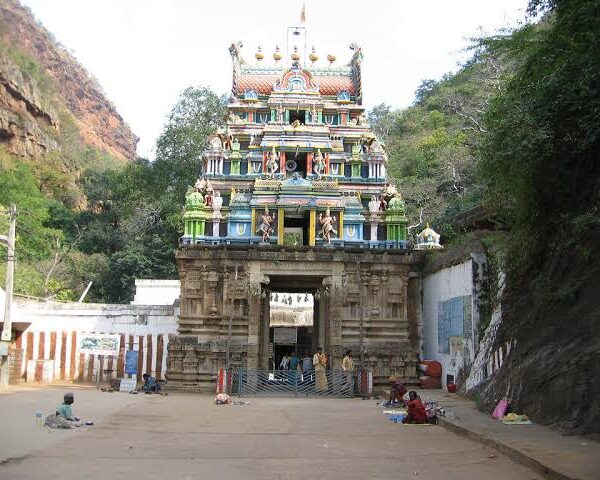
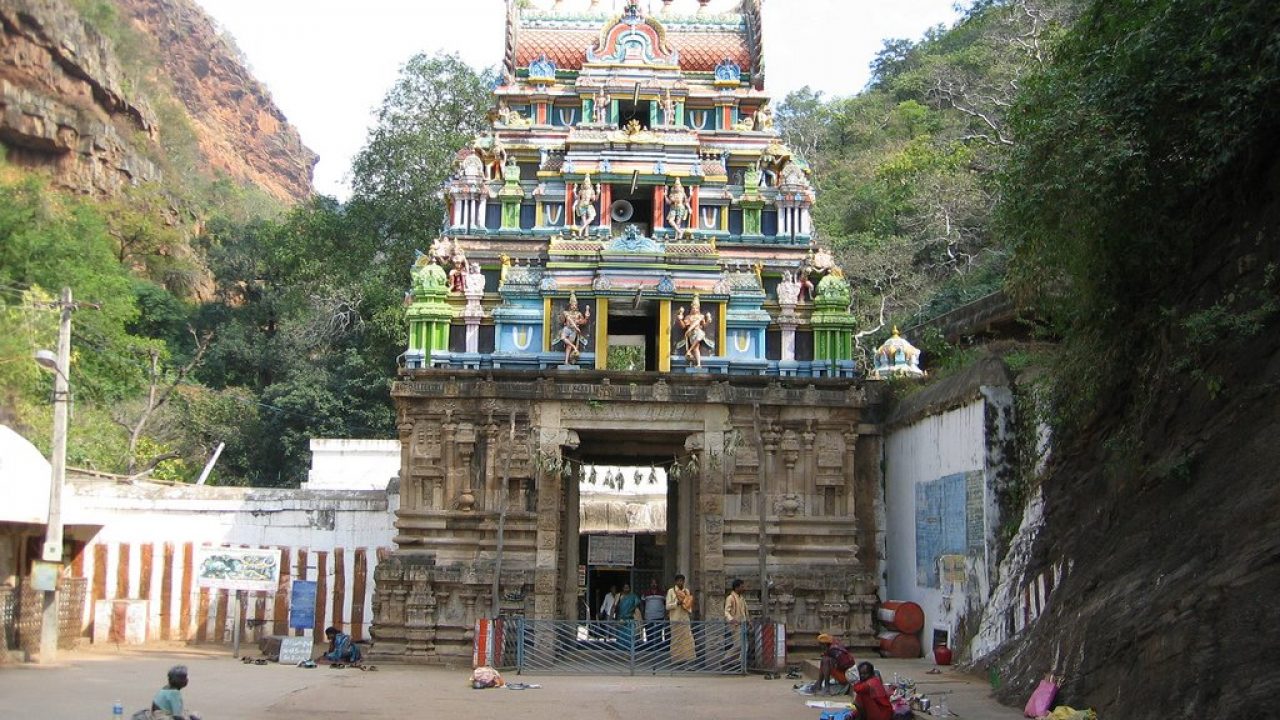
Divyadesam Yeguva Sri Ahobila Narasimha Swamy Temple
About Ahobilam Narasimha Temple, Kurnool
Given that Lord Narasimha’s Deity is housed beneath the Karanja Tree, the Lord is sometimes referred to as Karanja Narasimha. Honge Mara is the local name for the Karanja Tree. Because He wields the Saaranga bow, the Lord is also known as Saaranga Narasimha. There is a background to this. Hanuman once engaged in meditation while reciting the holy name of Lord Rama. Lord Narasimha abruptly appeared in front of him and questioned the reason for his call. Hanuman instructed him to turn around because he was addressing Rama by name. Rama, according to Narasimha, arrived at this location after Hanuman beckoned him. Hanuman asserted that since he lacked Rama’s form, he could not be Rama.
A holy site known as Ahobilam Lakshmi Narasimha Swamy Temple is situated in Kurnool, Andhra Pradesh State, and is encircled by stunning Eastern Ghats range hills. The Supreme Godhead took on the form of Lord Narasimha Swamy in this location in order to defeat the demon Hiranyakashipu and save his devoted follower Prahlada. This area’s Si Lakshmi Narasimhaswamy Temple is a well-known South Indian destination for pilgrims. This shrine, also known as Thiru Singavel Kundram, is famed for being one of the 108 Divyadesams.
The vast snake bed of Lord Vishnu, Sri Adi Sesha, is compared to the Eastern Ghats range. Ahobilam is on Tirupati’s stomach, and Sri Shailam is on its tail as it sleeps on its seven hoods. The demon king Hiranyakashipu lived in Ahobilam, according to the Brahmanda Purana, before being slain by Lord Narasimhaswamy.
Laxmi Narasimha Swamy Temple Significance:
The Supreme Lord, who took the form of Lord Narasimha and had a lion’s head and a human body, tore the demon Hiranyakashipu apart. When the demigods saw this holy accomplishment, they worshipped Lord Narasimha and called him “Ahobala,” which means “great strength.”
Ahobilam means “beautiful cave” in another sense. Garuda meditated there and received blessings from the Lord, therefore the phrase alludes to the cave where he did so. According to legend, Garuda spent countless years in meditation on a hilltop in the Nallamallai highlands range in order to see Lord Narasimhadev. The Lord, pleased with his dedication, showed Himself in a cave nearby and told Garuda where it was. Garuda arrived at the cave and received a glimpse of the Lord.
He sang a few chosen hymns in his worship of the Lord. Garuda saw himself as fortunate for having seen the Lord and worshipped Him, and as a result, this location became known as Ahobilam. The mountains known as Garudachala, Garudadri, and Garudashailam were where Garuda meditated.
Nava narasimha Swamy Temples in Ahobilam:
In Ahobilam, there are nine temples housing the Lord Narasimha’s self-manifested deities. Sri Jwala Narasimha, Sri Ahobila Narasimha, Sri Malola Narasimha, Sri Kroda Narasimha, Sri Karanja Narasimha, Sri Pavana Narasimha, Sri Bhargava Narasimha, Sri Yogananda Narasimha, and Sri Chatravata Narasimha are the titles by which these nine deities are worshipped.
The Upper Ahobilam, also known as Eguva Ahobilam, and the Lower Ahobilam, also known as Diguva Ahobilam, are two divisions of the Ahobilam. The following temples are located in Upper Ahobilam, which is roughly ten kilometres away from Lower Ahobilam: Ahobila Narasimha, Krodha Narasimha, Jwala Narasimha, and Malola Narasimha. The temples of Sri Yogananda Narasimha, Chatravatha Narasimha, Pavana Narasimha, and Bhargava Narasimha are located in Lower Ahobilam. On the route from Lower Ahobilam to Upper Ahobilam, there is a Sri Karanja Narasimha temple. It is a widely held idea among devotees that the nine planets gained their strength via worship of these nine different manifestations of the Lord, and that anyone who worships these nine manifestations can counteract the negative effects of each planet.
For a long time, the Golkonda Nawabs were in charge of this location. Hyder Ali robbed it in 1780, but he was unable to seize it. A Pindari gang pillaged the location once more in 1816. Raja Vasireddy Venkatadri Nayudu, who ruled the region from Amravati, had a gradual recovery after these two assaults. The location’s central Koneru (tank) was dry when it was visited in 1882. When the Pindaris pillaged this location, up to 9,840 rifles and 44 bullets that may have been connected to them were discovered. The famous Sri Krishna Deva Raya stopped by the scenic hill.
Upper Ahobilam Temples:
Ahobilam Ugra Narasimha Swamy:
The principal and oldest of Ahobilam’s nine temples is Sri Ahobila Narasimha. Ahobila Narasimha’s shaligrama form is in sukhasana and Ugra bhava (ferocious), tearing apart Demon Hiranyakashipu’s chest. Prahlada is visible before the Lord. The holy consort of the Lord, Chenchu Lakshmi, is also available for devotees to see. In the padmasana position, the goddess is.
Sri Ahobilam Kroda Narasimha Swamy:
The devotees also worship Sri Kroda Narasimha as Varaha Narasimha. It is thought to be a particularly unique form of Lord Narasimha Swamy and bears the face of a hog. Although Lord Narasimha slew Hiranyakashipu, he was furious with Lord Brahma for the blessing he had given to the latter. The Vedas slipped from his hands as a result of Lord Brahma’s aversion to approaching him despite his calls for him. In order to conserve the Vedas, Bhumi Devi kept them and brought them to Patala. The demigods asked Lord Narasimha for assistance because the Vedas were lost. The Lord travelled to Patala carrying the Vedas in the form of Kroda, an animal with a single front horn.
He exited Patala carrying Bhumi Devi seated atop His horn. After obtaining the Vedas, the Lord appeared here as Sri Kroda Narasimha and seated. By then, he had calmed down. Then Lord Brahma came to him, pleading for his pardon and asking for the Vedas.
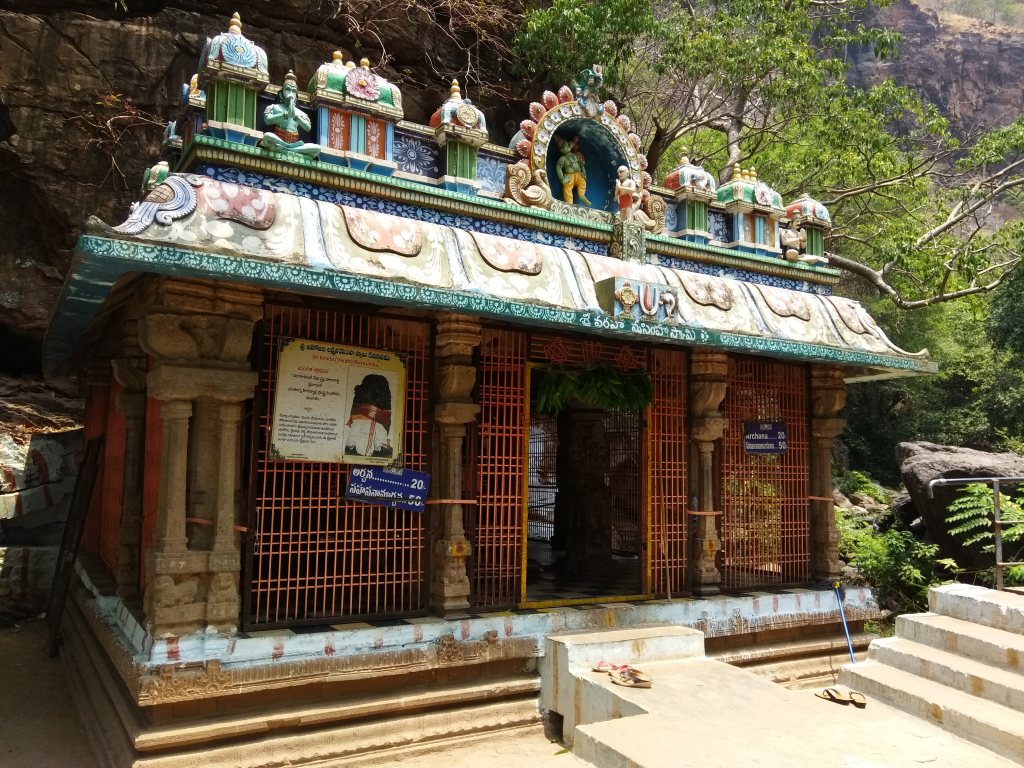
Brahma asked Lord Narasimha, but he refused, claiming that Brahma was not a responsible person because he had previously lost it through negligence. Then Brahma advised that Lakshmi-Devi receive the Vedas. Lord granted Brahma darshan as Sri Malola Narasimha after agreeing with him.In this temple, devotees can see both Sri Kroda Narasimha and Sri Lakshmi Narasimha. According to legend, Lord Narasimha became attached to Chenchu Lakshmi, which irked Lakshmidevi.
In this image, the Lord appears to be attempting to appease Lakshmidevi. Devotees may also view Sri Varaha Tirtha here. The worshippers must hike a short distance to get to the Sri Krodha Narasimha shrine. They must continue walking along the banks of the Bhavanashini River after leaving the Ahobila Narasimha Shrine in order to get to this temple.
The first Jeeyar of the Ahobilam Mutt gave the Bhagavad-Gita Kaalakshepam to the then 74 Simhasanadipatis nearby using the Sribhashya as his interpreter.
Sri Ahobilam Malola Narasimha Swamy:
From the Kroda Narasimha temple, one must up a short flight of stairs to get to the Malola Narasimha Temple. The image of Lord Narasimha is depicted at this location in a serene state, and Lakshmidevi is also close by. Mother Lakshmi is referred to as “Ma,” while the word “Lola” means “beloved.” Because Lord Narasimha is Mother Lakshmi’s favourite, he is revered as Malola Narasimha. Additionally known as Markonda Lakshmi Kshetra, this temple. The Utsava Murthy of Sri Malola Narasimha travels with the Jeeyar of Ahobila Mutt and is one of Narasimha’s Nine Deities. There is a particular explanation for it, which is as follows.
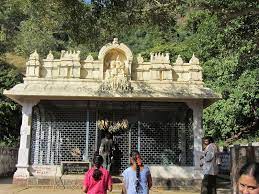
Young Srinivasacharya was one of Melkote’s followers. One day, Lord Lakshmi Narasimha advised him in a dream to go to Ahobilam, enter sannyasa, and continue performing holy duty there. Srinivasacharya, also known as Varada Vishnuvarcharya, sought the opinion of his master, Sri Ghatikasatam Ammal, because he couldn’t accept what he was seeing in his dream. His guru counselled him to immediately carry out the Lord’s orders.
With the blessing of his teacher, Srinivasacharya hurried to Ahobilam and was met there by Mukundaraya, the local chief who had been given specific instructions by the Lord to meet Srinivasacharya there.
Lord Narasimha, who manifested as a saint, founded the Ahobilam Mutt and gave Srinivasacharya the sannyasa vow. He was given the name Sathakopa Jeeyar by the Lord, who also gave him instructions to go door to door and preach the Vaishnavite faith while carrying the Lord’s Utsava Murthy. He was also instructed by the Lord to lead the disciples spiritually.
Sri Sathakopa Jeeyar was perplexed as to which Utsava Murthy he should bring because the Lord had not specified a particular Utsava Murthy. He asked the Lord to select the Utsava Murthy after reflecting on him. The Utsava Murthy of Sri Malola Narasimha immediately flew out of the temple and reached out to touch his hands. Sri Malola Narasimha’s Utsava Murthy is embellished with a Paduka, signifying that the Lord is prepared to embark on a journey. Since then, the Jeeyars of Ahobilam Mutt have been touring with the Utsava Murthy of Sri Malola Narasimha, bestowing its blessings on the devotees.
Sri Ahobilam Jwala Narasimha Swamy:
The temple of Malola Narasimha is a few steps distant from Sri Jwala Narasimha. The pilgrims are advised to return to Krodha Narasimha Temple and then proceed to walk down the banks of the Bhavanashini River in order to reach Sri Jwala Narasimha Temple rather than climbing. At the foot of Ugra Stambha on a hill named Achalachaya Meru, there is a shrine dedicated to Sri Jwala Narasimha. To get to this temple, one must pass the Bhavanashini River’s waterfall.
The precise location of Lord Narasimha’s murder of Hiranyakashipu is here. Lord Narasimha’s rage peaked at this point. In this temple, the image of Lord Narasimha is seen breaking apart Hiranyakashipu with His mighty nails.
Sthanu Narasimha, who emerges from the pillar, and Veera Narasimha, who is engaged in combat with Hiranyakashipu, are the other two manifestations of the Lord that can be seen.
The nearby Rakta Kunda is a little pond where Lord Narasimha washed His blood-stained hands, causing the water to turn red. Red stains are still visible surrounding this tirtha today. This pond’s water is incredibly pleasant and pure.
The nearby Rakta Kunda is a little pond where Lord Narasimha washed His blood-stained hands, causing the water to turn red. Red stains are still visible surrounding this tirtha today. This pond’s water is incredibly pleasant and pure.
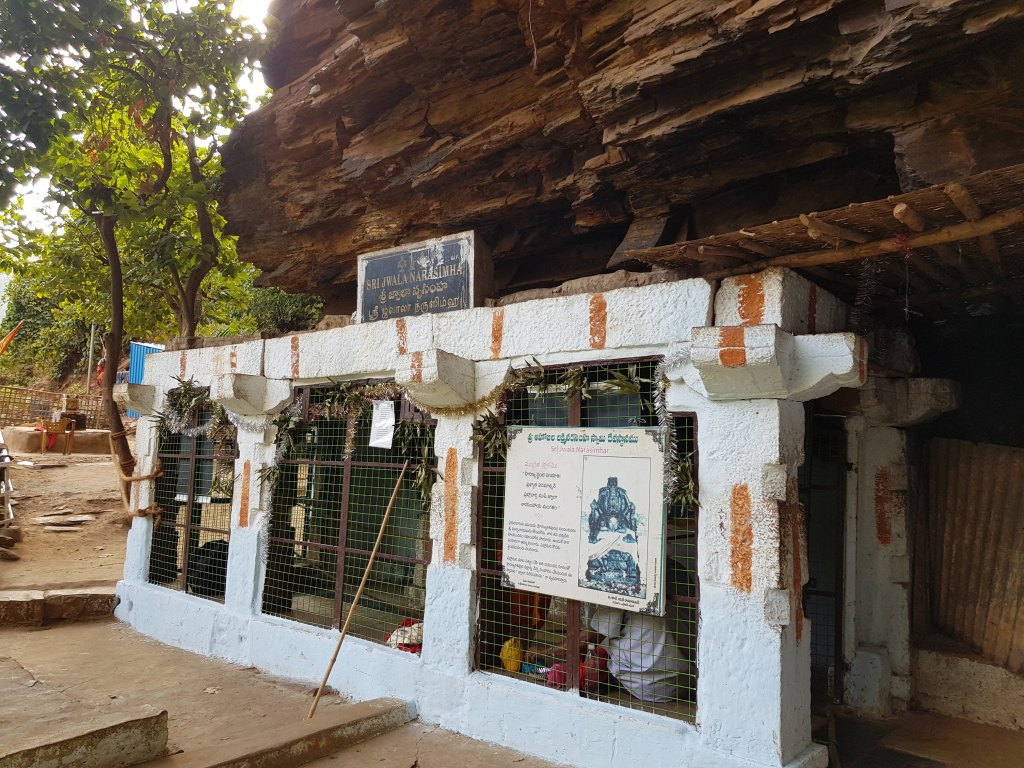
Diguva / Lower Ahobilam Temples:
Sri Ahobilam Yogananda Narasimha Swamy:
After defeating Hiranyakashipu, Lord Narasimha showed Prahlada a few yoga positions. The image of the Lord is depicted in this temple as being seated in padmasana with yogapatta wrapped over His legs. Lord Brahma is said to have once visited this location while having a troubled state of mind. By praising the Lord and engaging in yoga, he attained calm and left. The Deity was being worshipped in a lengthy tunnel, but He was brought out and established here for the sake of adoration.
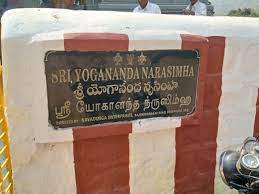
Sri Ahobilam Chatravatha Narasimha Swamy:
The Lord is depicted in this scene in a singular form, sporting a stunning smile. The Lord is commonly known as Chatravatha Narasimha in this location since He is worshipped beneath a peepal tree and is surrounded by thorny shrubs.
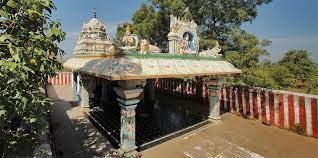
The Lord is holding his left hand in the tala mudra. In no other temple may one observe the Tala Mudra in any other manifestation of the Lord. It is stated that once two Gandharvas from the Meru Mountain, known as Haha and Hoohoo, came here to amuse the Lord with beautiful music.The Lord granted them fame as talented singers. Here, Chatravatha Narasimha was adored by Lord Indra and the gods, who asked Him to destroy the demon king. Devata Aradhana kshetra is another name for this temple for this reason.
Sri Ahobilam Paavana Narasimha Swamy:
The Lord is referred to as Pavana Narasimha since this temple is located along the banks of the River Pavana. Of the nine Narasimhas, the Lord is in this form the most serene. Pamuleti Narasimha Swamy is another name for the Lord at this place. It is thought that the Lord frees his followers from all the sins they may have committed, whether intentionally or unknowingly, in previous and present lifetimes. Sage Bharadwaja was absolved of the major sin of Brahma-hatya at this location.
Devotees must climb a number of difficult steps to get to this temple because it is located deep within the forest. The stairs start out close to the Sri Ahobilam Narasimha temple. It is also possible for devotees to go to the temple by local jeep, but doing so is not advised due to the poor condition of the roads. Additionally, it is suggested that you avoid going after 5 o’clock due to the presence of wild creatures in the forest.
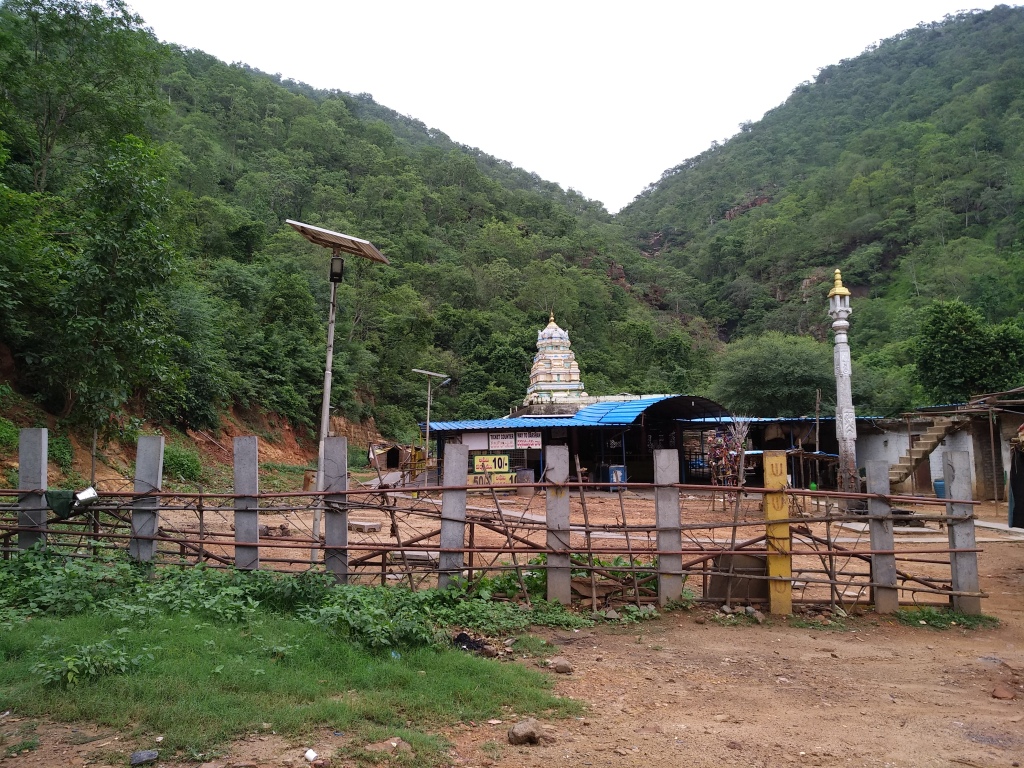
Sri Ahobilam Bhargava Narasimha Swamy:
Lord Parashurama, also known as Bhargava Rama, underwent penance here in order to appease Lord Narasimha. At the precise instant that he tore Hiranyakashipu’s chest open, Parashurama wished to see the Lord. Lord Narasimha was touched by his devotion and granted Him the sought darshan. When the demon Hiranyakashipu, who was lying on the Lord’s lap, stared at Parashurama while the Lord was giving him darshan, Parashurama asked the Lord to manifest Himself in that form. The Lord who is now being prayed to here is now called as Sri Bhargava Narasimha Swamy. This form of Lord Narasimha in Ahobilam is regarded as the most hostile of all the forms.
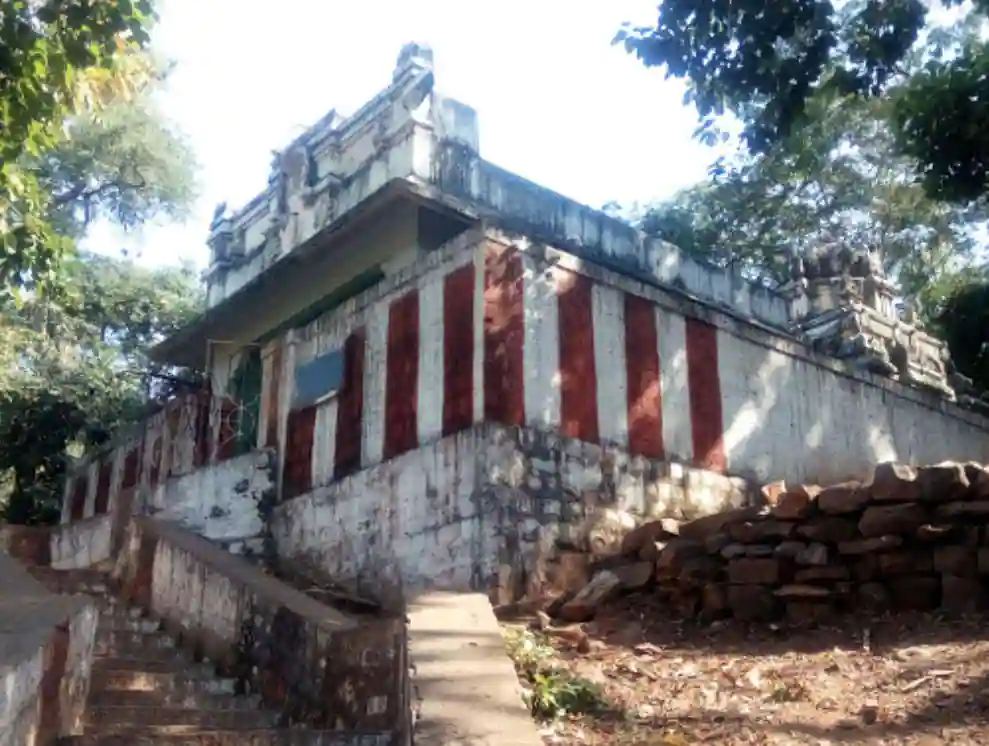
The Akshaya Tirtha, also known as the hallowed Pushkara Tirtha, is where the temple is located. This Theertha is where Parashurama used to take his baths, and Lord Bhargava Narasimha is worshipped with its water. In this location, Sage Vasishtha and other sages had carried out penance. Prahlada can be seen by devotees at the Lord’s lotus feet. Only local jeeps or cars may access this temple because it is located in the middle of a dense forest and has a mountainous topography.
Given that Lord Narasimha’s Deity is housed beneath the Karanja Tree, the Lord is sometimes referred to as Karanja Narasimha. Honge Mara is the local name for the Karanja Tree. Because He wields the Saaranga bow, the Lord is also known as Saaranga Narasimha. There is a background to this.
Hanuman once engaged in meditation while reciting the holy name of Lord Rama. Lord Narasimha abruptly appeared in front of him and questioned the reason for his call. Hanuman instructed him to turn around because he was addressing Rama by name. Rama, according to Narasimha, arrived at this location after Hanuman beckoned him. Hanuman asserted that since he lacked Rama’s form, he could not be Rama.
Hanuman once engaged in meditation while reciting the holy name of Lord Rama. Lord Narasimha abruptly appeared in front of him and questioned the reason for his call. Hanuman instructed him to turn around because he was addressing Rama by name. Rama, according to Narasimha, arrived at this location after Hanuman beckoned him. Hanuman asserted that since he lacked Rama’s form, he could not be Rama.As soon as Lord Narasimha appeared as Rama holding a bow in one hand and a Sudarshana in the other, Hanuman was persuaded. From that point forward, Sri Karanja Narasimha was used to worship the Lord. In the temple, there is a tiny Hanuman statue.
Sage Gobila was cursed by Sage Durvasa to become illiterate. He began reciting the Narasimha Mantra as he offered homage to the Lord. The Lord was delighted with him and gave him the blessing that he would study much and eventually find liberation. Visitors who are devout come here to worship and seek the Lord’s grace.
Ugra Stambham:
According to legend, this peak was once a portion of the pillar from which Lord Narasimha killed Hiranyakashipu. The entire pillar broke apart as soon as the Lord came out of it. His first movement generated 172 sounds, the earliest fundamental codes of the 172 standard ragas. Out of these, just 52 melakarta ragas are still in existence, and even these are difficult to fully grasp. Ukku Stambha is another name for Ugra Stambha. Telugu’s word for ukku is steel. A lotus foot impression of Sri Chaitanya Mahaprabhu, who visited this location while travelling through South India, can be seen on the top of Ugra Stambha.
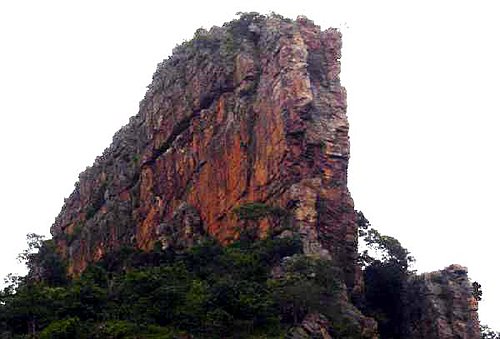
Dekho Apna Desh
The DAD of Tourism
